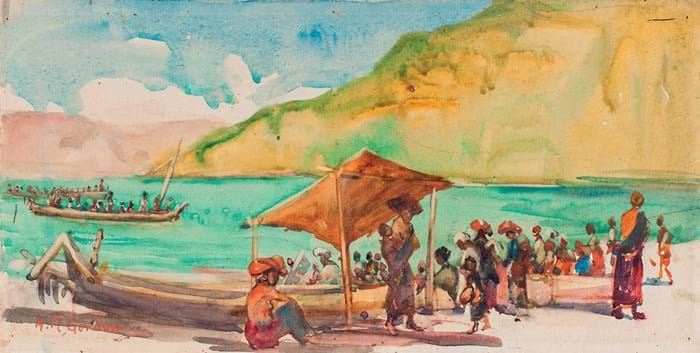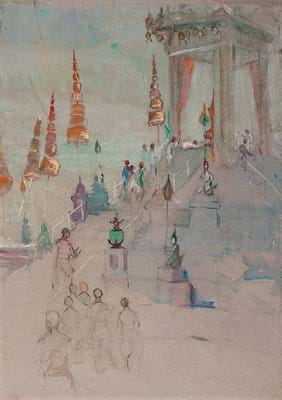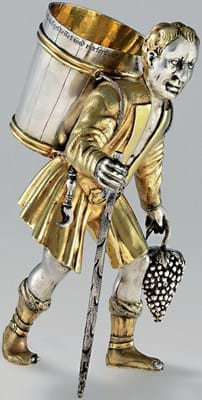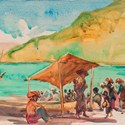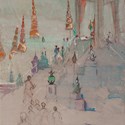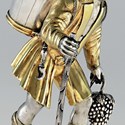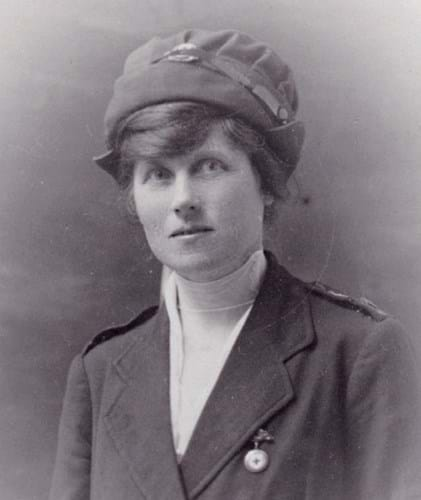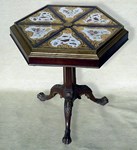One such tale concerns Hilda May Gordon (1874-1972) a British artist who struck out alone for a six-year around the world trip in the 1920s, funded by the art she produced on the way.
Trained under Hubert von Herkomer and Frank Brangwyn, Gordon had exhibited in a solo show on Bond Street in 1907 and served as a nurse during the First World War before setting out in 1922.
Her plan to visit the Dalmatian Coast for four months quickly transformed into an international tour, during which she sketched from the back of an elephant in India, traversed the Khardung pass in Tibet on the back of a yak and witnessed the cremation of the King Rama VI of Siam.
Gordon also travelled through Bali, China, Hawaii, South Africa and many other places, recording the world around her as she went. The gouaches she produced depicted anything from local traditions to vast landscapes.
“I lingered wherever I saw something I wanted to paint and whenever I had accumulated a fairsized collection, I made for the nearest big city and had an exhibition,” she said in 1928. “In this way, all around the world I painted scenes and natives on the spot, and by selling my work paid for my expenses and had something to invest as well.”
Epic journey
During LAW, 46 of her works are offered at Martyn Gregory, in a show that marks the 90th anniversary of the culmination of her epic journey.
“Some are highly finished, but most are very free-handed and capture the beauty that she witnessed,” says the gallery’s Oliver Harris, who will present a talk on the artist during the show. “Her works have a timeless quality.”
Though the story was widely publicised at the time of her journey, she outlived her fame and at her death left bundles of paintings and uncelebrated works.
In 1975, part of her estate came to auction – some stuffed in a briefcase – which Gregory came across by chance. He purchased a large portion of her works and started piecing together her story and has held several exhibitions of her works over the years.
“These are charming works but it is important to know the story behind them,” Harris adds. “That’s what makes them so interesting.”
Martyn Gregory is among 32 exhibitors at this edition of LAW. Among the other stories on show is a 100-year history of commercial illustration from Stephen Ongpin Fine Art in The Influencing Image.

‘Sports d’Hiver’, a cover illustration for Harper’s Bazaar Magazine, 1933, is offered by Stephen Ongpin Fine Art for £18,000 at its ‘London Art Week’ exhibition.
Robilant + Voena, meanwhile, will join forces with Savile Row tailor Henry Pool to discuss portraits and fashion. Callisto Fine Arts will focus on the only known sculpted portrait of Mary Shelley, author of Frankenstein, by Camillo Pistrucci. Dubbed Salons, many of these shows feature a tight focus and at least one special event or talk.
For Sam Fogg, the week is a chance to try an entirely new type of show. It will present one object at a time over the seven days, starting with a wrought-iron grill from 13th century France and ending with a set of 19th century prints made from the plaques of the 12th century Barbarossa Chandelier.
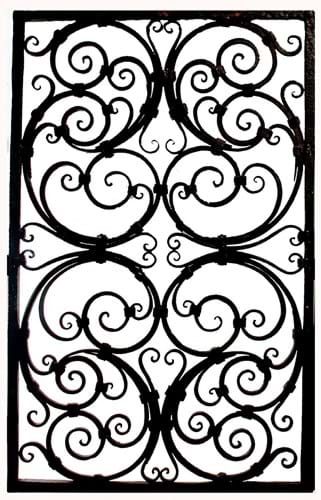
A wrought iron grill, northern France, 13th century, offered by Sam Fogg where prices start at £3000 during 'London Art Week'.
A daily talk on each successive exhibit will introduce visitors to the history of medieval European art a day at a time, with an emphasis on design. This is a chance, according to the gallery’s Matthew Reeves, to highlight the innovation that was central to medieval art.
“It is so often thought that it was created in the ‘dark days’ but we are going to challenge that idea. There was great invention in medieval art – textile designers looked at iron work, these designs bled into painting. Ideas flowed back and forth,” he says.
Buyers in this field are likely to collect across a number of media, as the show suggests. “When you’re interested in medieval art it’s easy to get obsessed by a lot of different areas. We’re trying to promote that as well,” Reeves adds.


